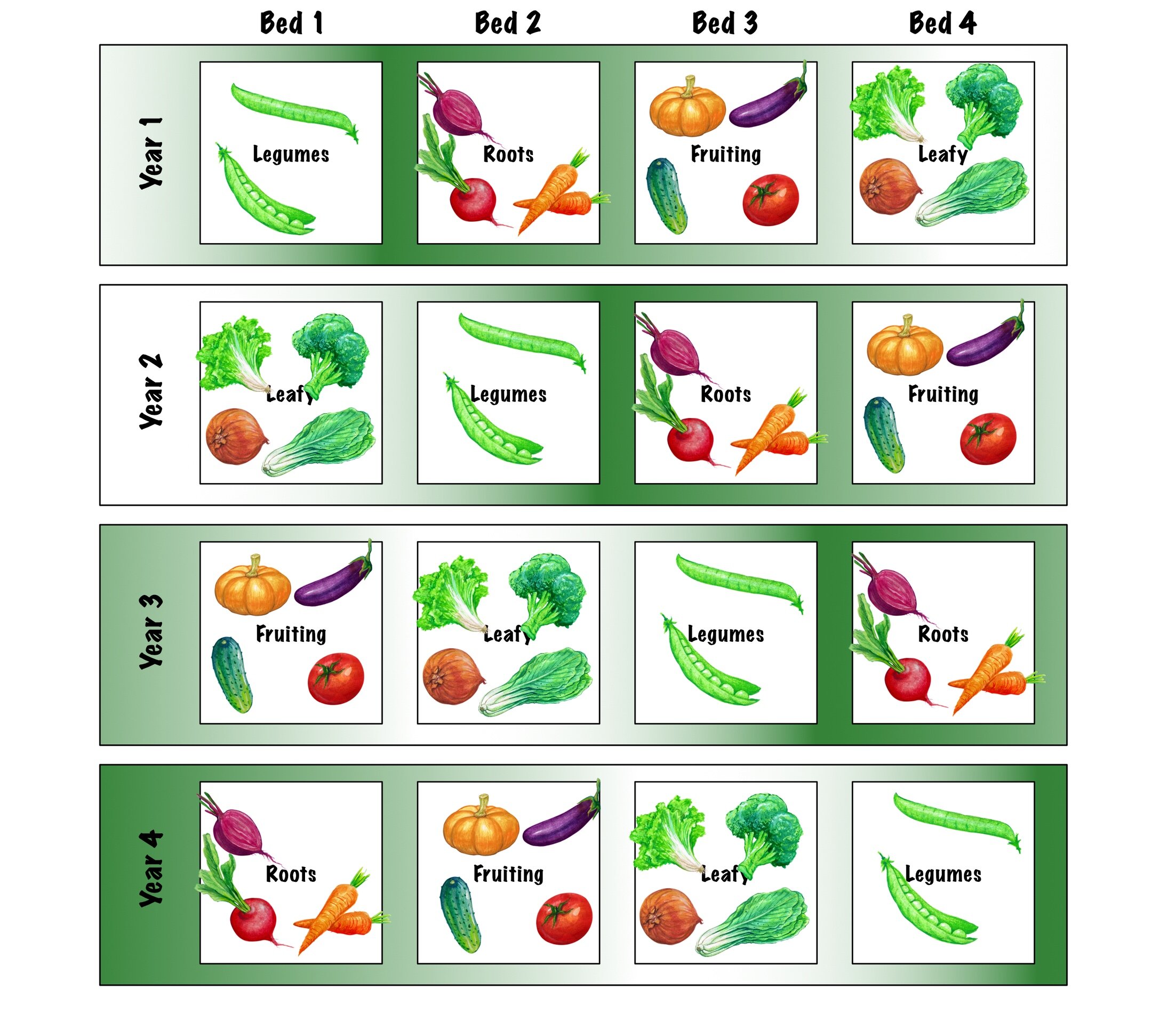A Simple Method for Crop Rotation
Crop rotation is a way to move your vegetable plants to a new location in the garden each year, helping to maintain soil nutrient balance, and to reduce the risk of pests and diseases. There are many ways to rotate your plants, but today I’m focusing on a simple way of rotation using just 4 plant groups.
Have you grown a vegetable garden before? I’m not sure there is anything more magical! I love the way life just springs from such a tiny and unassuming seed, grows into a plant that provides shelter and food for a multitude of organisms in your garden, and then provides the grower with nourishment and sustenance. Then, in the most incredible circle, it creates seeds to restart the process all over again. But during the growing process the plant uses up an abundance of nutrients in the soil, and can become an enticing treat to pests and disease. Crop rotation is an organic method that can help to maintain balance, and help you continue to have healthy plants in future growing seasons.
The guiding principle of crop rotation is to move the crops in your garden into a new location each year. There are many ways to rotate your vegetable plants, but today I’m focusing on a super simple method of rotation that can easily be done in the home garden - rotating plants by their crop group. If you have our Garden Reference Cards you’ll see that each vegetable card includes the crop group at the top of the card, so you’ll never have to wonder which group it fits into!
Crop Groups:
There are several ways of classifying crop groups, but to keep things simple and straightforward I sort my plants into 4 groups: legumes, leafy crops, fruiting crops and root crops. The plants within each group have similar nutrient requirements, are often targets of the same pests, and subject to the same diseases. So by grouping the plants into categories, and moving these in the garden each season, you help to maintain balanced soil nutrition, and prevent a buildup of pests and diseases targeting your crops.
Legumes: These plants work with bacteria in the soil to increase nutrients in their growing locations, by adding nitrogen to the ground, and even helping to sequester excess carbon from the atmosphere into the soil. Plants in this group include beans and peas, and cover crops like clover and alfalfa.
Leaf crops: Leafy crops, like lettuce, spinach, broccoli and cabbage, use a lot of nitrogen as they grow. Plants in this group often grow very quickly, and so need a lot of energy to reach their end goals. Honorary members of this group are crops such as onions and corn - although they don’t share an appearance with the other members of this group (onions being a root crop, and corn technically a grass), they have such high nitrogen requirements that I like to include them in this group for crop rotation planning.
Fruiting crops: These plants still need nitrogen to grow, although not as much as the leafy crops, but need heavy phosphorus. Plants in this group include tomatoes, peppers, squash, melons, cucumbers and many others.
Root crops: Like their name suggests these crops are grown and harvested for their root production - crops like carrots, radishes, and beets. They need even less nitrogen than the fruiting crops, but heavy potassium.
Rotating by Crop Groups
For a simple rotation plan consider rotating your crops in the order of the groups above: legumes, followed by leafy vegetables, then fruiting crops, and lastly root crops. The legumes enrich the soil, followed by the leafy vegetables which benefit from the nitrogen boost, then fruiting crops with their lower nutrient needs, then root crops which need even lower nitrogen and phosphorus. And then the process can begin all over again! In the picture below you can see how the rotation continues from year to year. The dark green color represents nitrogen added to the soil by legume crops, decreasing over time with later plantings.
Rotating crops in these 4 simple groups makes rotation simple and easy from season to season. The dark green color represents nitrogen which is increased in the soil where legumes grow, decreasing over time with subsequent crops.
Rotating crops in these groups is a simple and easy way to move your plants year-to-year, keeping soil in balance and helping to minimize pest and disease issues. And it can be done on both a large and a small scale. Only have one or two growing areas? You can still mentally divide those into smaller sections and move your crops within those areas.
It can seem like there’s a lot to remember with gardening, but don’t worry - the Garden Reference Cards can help you to keep it all straight! These pocket-sized and dirt-proof cards give you tons of information, from crop rotation and seed starting and transplanting times, to growing needs, companion planting and SO MUCH more. Check them out for yourself here!
Do you use crop rotation in your garden? Do you think it’s helpful? I’d love to hear your thoughts!
Happy growing!
Ina Marie


